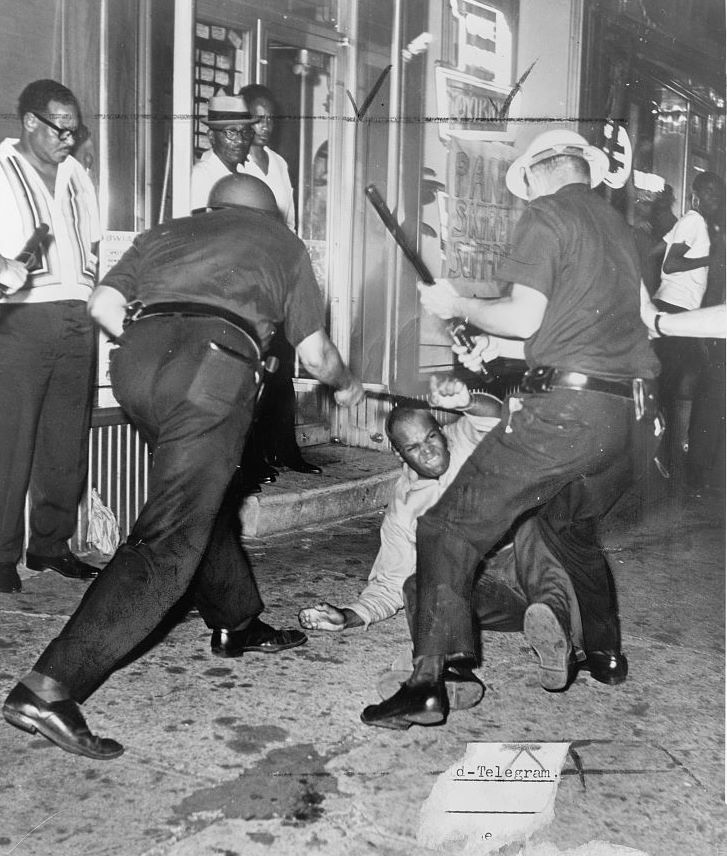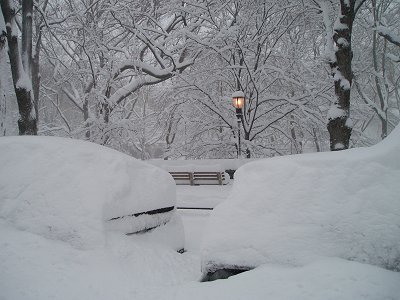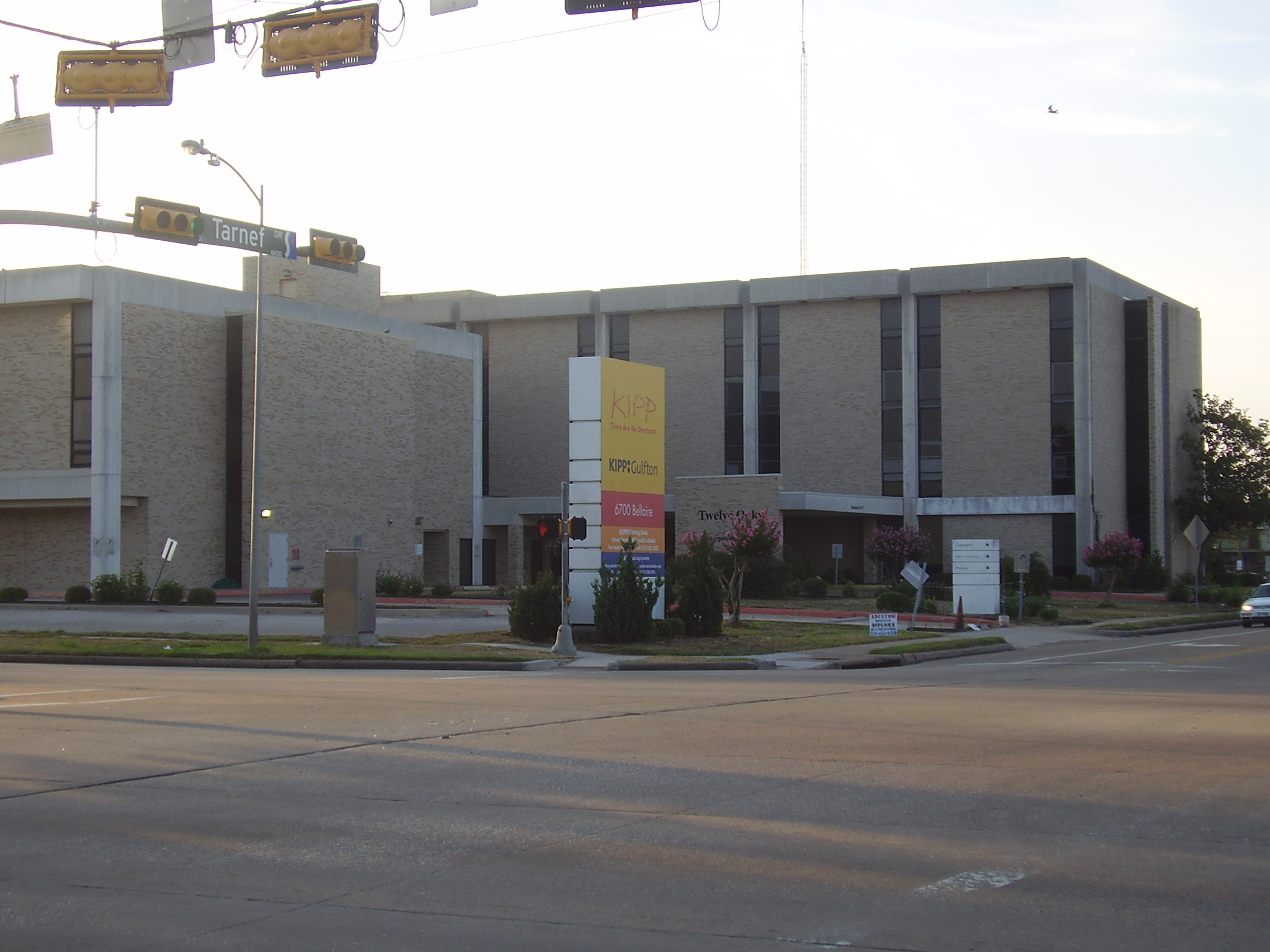|
133rd Street (Manhattan)
133rd Street is a street in Manhattan and the Bronx, New York City. In Harlem, Manhattan, it begins at Riverside Drive on its western side and crosses Broadway, Amsterdam Avenue, and ends at Convent Avenue, before resuming on the eastern side, crossing Seventh Avenue, and ending at Lenox Avenue. In Port Morris in the Bronx, it runs from Bruckner Boulevard/St. Ann's Place to Locust Avenue. The block between Seventh Avenue and Lenox Avenues was once a thriving night spot, known as "Swing Street", with numerous cabarets, jazz clubs, and speakeasies. The street is described in modern times as "a quiet stretch of brownstones and tenement-style apartment houses, the kind of block that typifies this section of central Harlem". __NOTOC__ History The street has historical significance during the Prohibition era when there were many speakeasies operating on the street and it was known as "Swing Street". The street also gained a reputation as "Jungle Alley" because of "inter-racial ming ... [...More Info...] [...Related Items...] OR: [Wikipedia] [Google] [Baidu] |
Riverside Drive (Manhattan)
Riverside Drive is a scenic north–south thoroughfare in the New York City borough of Manhattan. The road runs on the Upper West Side of Manhattan, generally paralleling the Hudson River and Riverside Park between 72nd Street and the vicinity of the George Washington Bridge at 181st Street. North of 96th Street, Riverside Drive is a wide divided boulevard. At several locations, a serpentine local street diverges from the main road, providing access to the residential buildings. Some of the city's most coveted addresses are located along its route. History Development The of land in the original park between 72nd to 125th Streets were originally inhabited by the Lenape people, but by the 18th century were used for farms by the descendants of European colonists. In 1846, the Hudson River Railroad (later the West Side Line and Hudson Line) was built along the waterfront, connecting New York City to Albany. In 1865, Central Park commissioner William R. Martin put forth ... [...More Info...] [...Related Items...] OR: [Wikipedia] [Google] [Baidu] |
Knowledge Is Power Program
The Knowledge is Power Program, commonly known as KIPP, is a network of free open-enrollment college-preparatory schools in low income communities throughout the United States. KIPP is America's largest network of charter schools. The head offices are in San Francisco, Chicago, New York City, and Washington, D.C. KIPP was founded in 1994 by Mike Feinberg and Dave Levin, two Teach For America corps members, influenced by Harriett Ball. KIPP was one of the charter school organizations to help produce the Relay Graduate School of Education for teacher training. History KIPP began in 1994 after co-founders Dave Levin and Mike Feinberg completed their two-year commitment to Teach For America. A year later, they launched a program for fifth graders in a public school in inner-city Houston, Texas. Feinberg developed KIPP Academy Houston into a charter school, while Levin went on to establish KIPP Academy New York in the South Bronx. In February 2018, Feinberg was removed from h ... [...More Info...] [...Related Items...] OR: [Wikipedia] [Google] [Baidu] |
New York Post
The ''New York Post'' (''NY Post'') is a conservative daily tabloid newspaper published in New York City. The ''Post'' also operates NYPost.com, the celebrity gossip site PageSix.com, and the entertainment site Decider.com. It was established in 1801 by Federalist and Founding Father Alexander Hamilton, and became a respected broadsheet in the 19th century under the name ''New York Evening Post''. Its most famous 19th-century editor was William Cullen Bryant. In the mid-20th century, the paper was owned by Dorothy Schiff, a devoted liberal, who developed its tabloid format. In 1976, Rupert Murdoch bought the ''Post'' for US$30.5 million. Since 1993, the ''Post'' has been owned by Murdoch's News Corp. Its distribution ranked 4th in the US in 2019. History 19th century The ''Post'' was founded by Alexander Hamilton with about US$10,000 () from a group of investors in the autumn of 1801 as the ''New-York Evening Post'', a broadsheet. Hamilton's co-investors included other New ... [...More Info...] [...Related Items...] OR: [Wikipedia] [Google] [Baidu] |
NYPost 133 Plant Gate Jeh
The ''New York Post'' (''NY Post'') is a conservative daily tabloid newspaper published in New York City. The ''Post'' also operates NYPost.com, the celebrity gossip site PageSix.com, and the entertainment site Decider.com. It was established in 1801 by Federalist and Founding Father Alexander Hamilton, and became a respected broadsheet in the 19th century under the name ''New York Evening Post''. Its most famous 19th-century editor was William Cullen Bryant. In the mid-20th century, the paper was owned by Dorothy Schiff, a devoted liberal, who developed its tabloid format. In 1976, Rupert Murdoch bought the ''Post'' for US$30.5 million. Since 1993, the ''Post'' has been owned by Murdoch's News Corp. Its distribution ranked 4th in the US in 2019. History 19th century The ''Post'' was founded by Alexander Hamilton with about US$10,000 () from a group of investors in the autumn of 1801 as the ''New-York Evening Post'', a broadsheet. Hamilton's co-investors included other ... [...More Info...] [...Related Items...] OR: [Wikipedia] [Google] [Baidu] |
Harlem Riot Of 1964
The Harlem riot of 1964 occurred between July 16 and 22, 1964. It began after James Powell, a 15-year-old African American, was shot and killed by police Lieutenant Thomas Gilligan in front of Powell's friends and about a dozen other witnesses. Immediately after the shooting, about 300 students from Powell's school who were informed by the principal rallied. The shooting set off six consecutive nights of rioting that affected the New York City neighborhoods of Harlem and Bedford-Stuyvesant. In total, 4,000 New Yorkers participated in the riots which led to attacks on the New York City Police Department (NYPD), vandalism, and looting in stores. Several protesters were severely beaten by NYPD officers. At the end of the conflict, reports counted one dead rioter, 118 injured, and 465 arrested. Background In the early 1900s appeared the first signs of resurgence in the north of Manhattan. After the construction of new subway routes that go as far as 145th Street, speculators and r ... [...More Info...] [...Related Items...] OR: [Wikipedia] [Google] [Baidu] |
52nd Street
52nd Street is a -long one-way street traveling west to east across Midtown Manhattan, New York City. A short section of it was known as the city's center of jazz performance from the 1930s to the 1950s. Jazz center Following the repeal of Prohibition in 1933, 52nd Street replaced 133rd Street as "Swing Street" of the city. The blocks of 52nd Street between Fifth Avenue and Seventh Avenue became renowned for the abundance of jazz clubs and lively street life. The street was convenient to musicians playing on Broadway and the 'legitimate' nightclubs and was also the site of a CBS studio. Musicians who played for others in the early evening played for themselves on 52nd Street. In the period from 1930 through the early 1950s, 52nd Street clubs hosted such jazz musicians as Louis Prima, Art Tatum, Fats Waller, Billie Holiday, Trummy Young, Harry Gibson, Nat Jaffe, Dizzy Gillespie, Thelonious Monk, Charlie Parker, Miles Davis, Marian McPartland, and many more. Although musici ... [...More Info...] [...Related Items...] OR: [Wikipedia] [Google] [Baidu] |
Harlem Riot Of 1935
The Harlem riot of 1935 took place on March 19, 1935 in New York City, New York, in the United States. It has been described as the first "modern" race riot in Harlem, because it was committed primarily against property rather than persons. Harlem is a northern neighborhood on Manhattan Island in New York City whose population at the time was predominantly African American. The rioting was sparked by rumors that a black Puerto Rican teenage shoplifter was beaten by employees at an S. H. Kress "five and dime" store. That evening a demonstration was held outside the store and, after someone threw a rock through the window, more general destruction of the store and other white-owned properties ensued. Three people died, hundreds were wounded, and an estimated $2 million in damages was caused to properties throughout the district. African American-owned homes and businesses were spared the worst of the destruction. Background During the Great Depression, minorities in Harlem an ... [...More Info...] [...Related Items...] OR: [Wikipedia] [Google] [Baidu] |
Willie "The Lion" Smith
William Henry Joseph Bonaparte Bertholf Smith (November 23, 1893 – April 18, 1973), nicknamed "The Lion", was an American jazz and stride pianist. Early life William Henry Joseph Bonaparte Bertholf, known as Willie, was born in 1893 in Goshen, New York. His mother and grandmother chose his names to reflect different parts of his heritage: Joseph after Saint Joseph (Bible), Bonaparte (French), and Bertholf (biological father's last name). William and Henry which were added for "spiritual balance". When he was three, his mother married John Smith, and Smith was added as the boy's surname, after his stepfather. In his memoir Smith reports that his father, Frank Bertholf (incorrectly spelled Bertholoff in many sources), was Jewish. Smith's New York birth record shows him as William H. Bertholf, with father, Frank Bertholf, a white electrician from nearby Monroe, New York. Smith became at least somewhat conversant in Yiddish and studied Hebrew with children of a Jewish family who w ... [...More Info...] [...Related Items...] OR: [Wikipedia] [Google] [Baidu] |
Pod's And Jerry's
Pod's and Jerry's, officially the Catagonia Club, was a cabaret and jazz club on 133rd Street in Harlem, New York City. It was one of the thriving speakeasies during the Prohibition era when the street was known as "Swing Street". It was established in 1925 by Charles "Pod" Hollingsworth and Jeremiah (Jerry) Preston. After the end of Prohibition in 1933 the club was renamed The Log Cabin, which was one of the last clubs to close on 133rd street in 1948, long after its demise. Description The club has been described as "perhaps the city's most egalitarian entertainment spot prior to the Village's Cafe Society which opened in 1938", an "after-after-hours joint" which was a "racially integrated cellar speakeasy, jumpin' with music, singing and dancing". It typically opened at midnight and was still full at 3-4 am, and it was not uncommon for patrons to be served breakfast at the club as late as 8am. The club, a "dimly lit enclave of twenty-five tables with red and white checkered ... [...More Info...] [...Related Items...] OR: [Wikipedia] [Google] [Baidu] |
Gladys Bentley
Gladys Alberta Bentley (August 12, 1907 – January 18, 1960) was an American blues singer, pianist, and entertainer during the Harlem Renaissance. Her career skyrocketed when she appeared at Harry Hansberry's Clam House in New York in the 1920s, as a black, lesbian, cross-dressing performer. She headlined in the early 1930s at Harlem's Ubangi Club, where she was backed up by a chorus line of drag queens. She dressed in men's clothes (including a signature tail coat and top hat), played piano, and sang her own raunchy lyrics to popular tunes of the day in a deep, growling voice while flirting with women in the audience. On the decline of the Harlem speakeasies with the repeal of Prohibition, she relocated to southern California, where she was billed as "America's Greatest Sepia Piano Player" and the "Brown Bomber of Sophisticated Songs". She was frequently harassed for wearing men's clothing. She tried to continue her musical career but did not achieve as much success as ... [...More Info...] [...Related Items...] OR: [Wikipedia] [Google] [Baidu] |
Speakeasies
A speakeasy, also called a blind pig or blind tiger, is an illicit establishment that sells alcoholic beverages, or a retro style bar that replicates aspects of historical speakeasies. Speakeasy bars came into prominence in the United States during the Prohibition era (1920–1933, longer in some states). During that time, the sale, manufacture, and transportation ( bootlegging) of alcoholic beverages was illegal throughout the United States. Speakeasies largely disappeared after Prohibition ended in 1933. The speakeasy-style trend began in 2000 with the opening of the bar Milk & Honey. Etymology The phrase "speak softly shop", meaning a "smuggler's house", appeared in a British slang dictionary published in 1823. The similar phrase "speak easy shop", denoting a place where unlicensed liquor sales were made, appeared in a British naval memoir written in 1844. The precise term "speakeasy" dates from no later than 1837 when an article in the '' Sydney Herald'' newspaper in ... [...More Info...] [...Related Items...] OR: [Wikipedia] [Google] [Baidu] |






